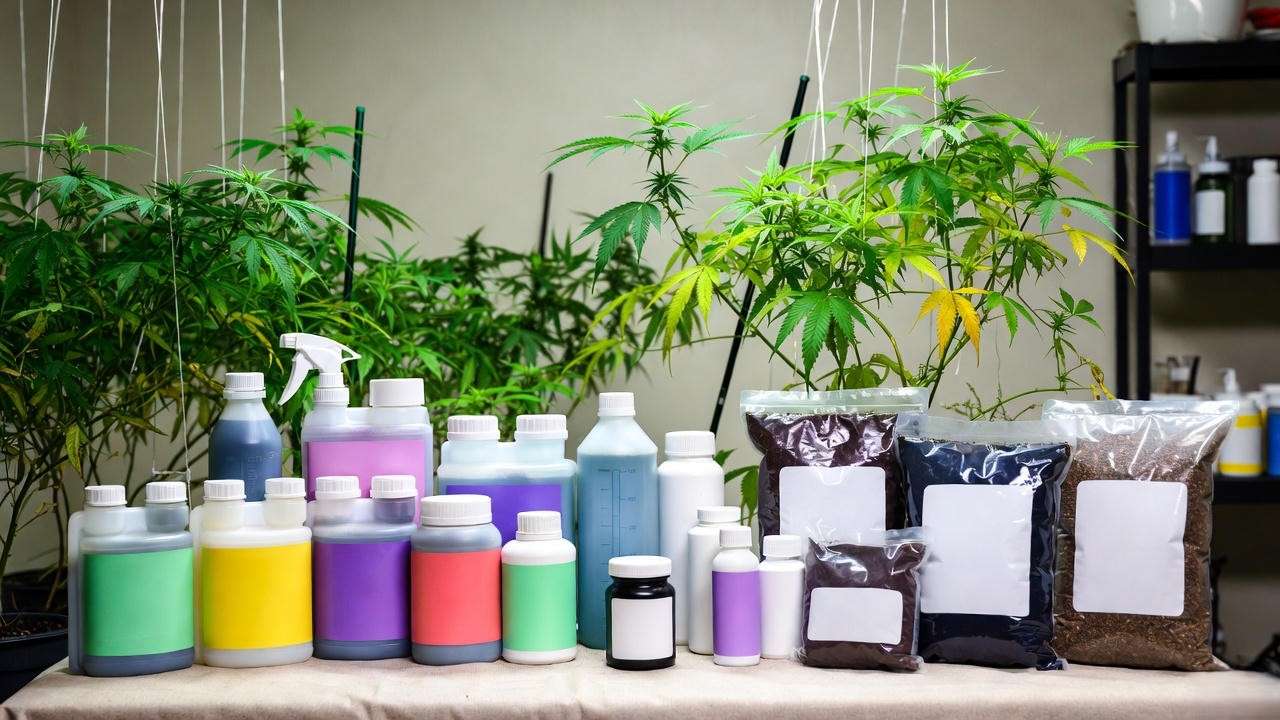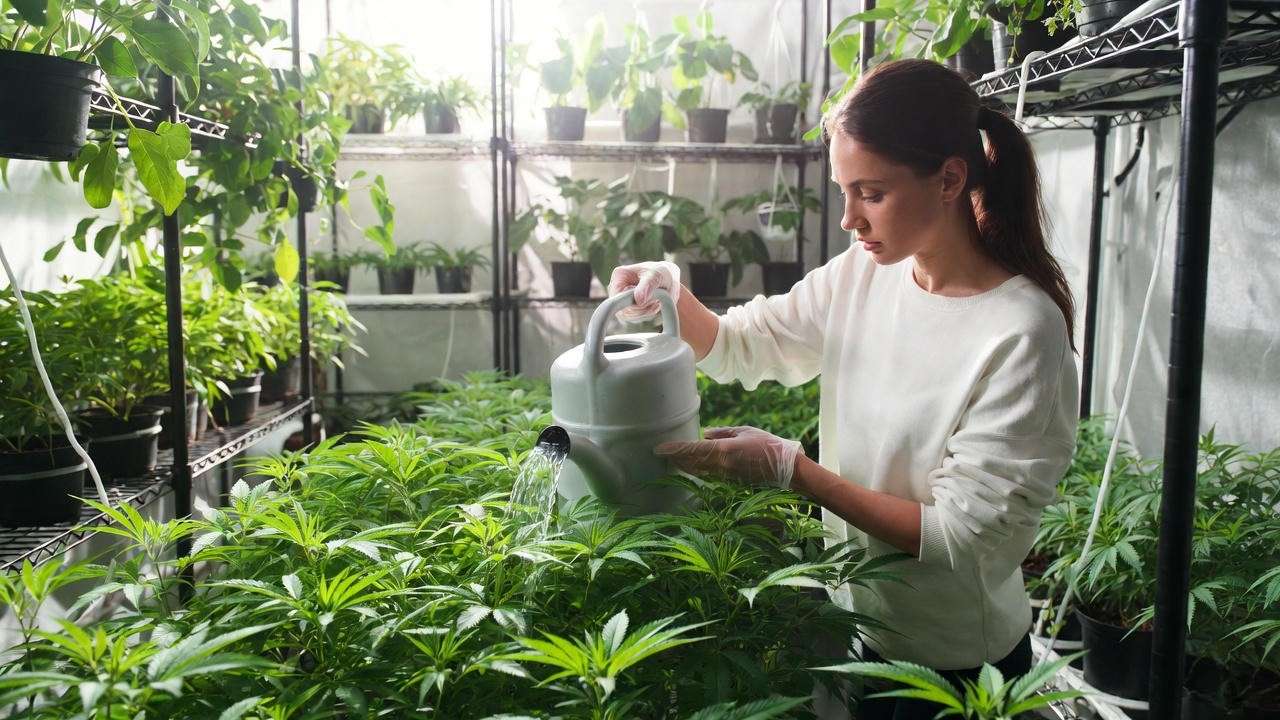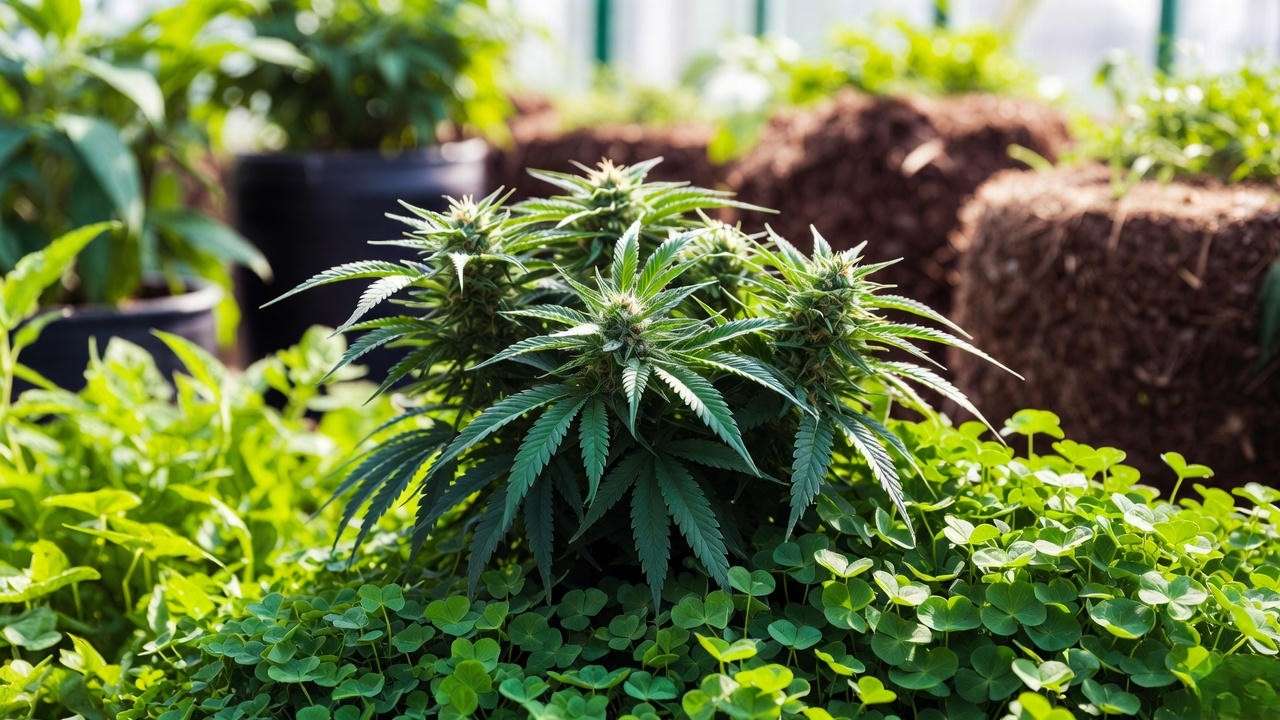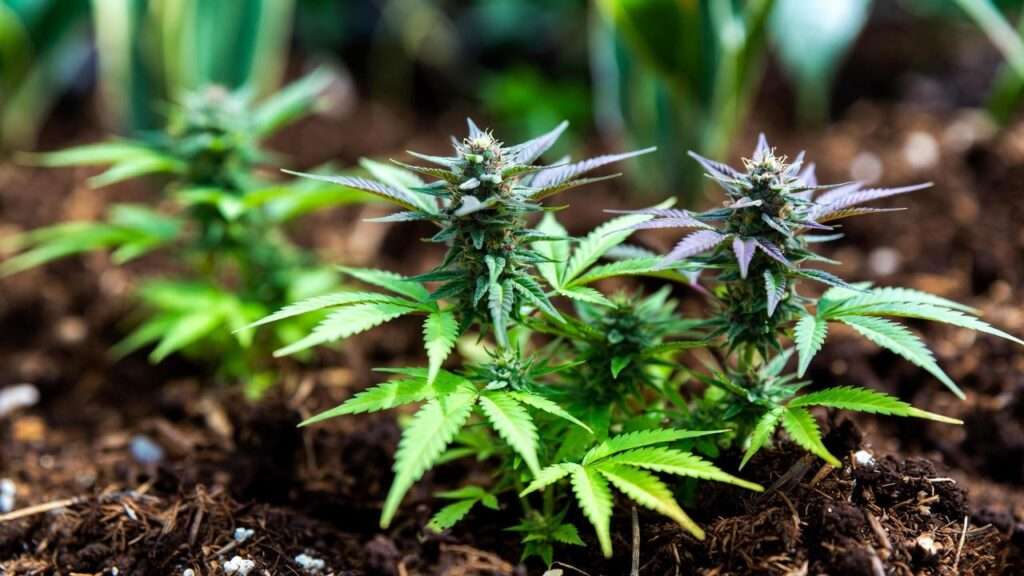Imagine harvesting dense, resinous buds bursting with flavor and potency, all from your own cannabis garden. The secret? Mastering the essential nutrients for weed plants. Whether you’re a novice grower or a seasoned cultivator, understanding how to nourish your cannabis is the key to unlocking vibrant growth and maximizing yields. 🌟 Poor nutrition can lead to stunted plants, weak buds, or even crop failure, but with the right knowledge, you can avoid these pitfalls and achieve thriving plants. This comprehensive guide, backed by horticultural science and real-world grower insights, dives deep into cannabis nutrition, offering practical, actionable tips to solve common challenges and elevate your grow game. From macronutrients to advanced feeding strategies, here’s everything you need to know to cultivate healthy, high-yielding weed plants. 🧑🌾
Why Nutrients Are Critical for Weed Plants 🌱
The Science of Cannabis Nutrition 🧪
Cannabis plants, like all living organisms, rely on a balanced diet of nutrients to thrive. These essential nutrients for weed plants fuel critical processes like photosynthesis, root development, and bud formation. According to research from the University of Guelph, cannabis absorbs nutrients through its roots and leaves, converting them into energy for growth, flowering, and cannabinoid production. 🌸 A well-nourished plant produces denser buds, richer terpene profiles, and higher THC or CBD content, directly impacting the quality of your harvest. Without proper nutrition, even the best genetics can underperform, making nutrient management a cornerstone of successful cultivation.
Common Nutrient-Related Problems and Their Impact 🚨
Nutrient deficiencies or excesses can wreak havoc on your grow. For example, nitrogen deficiency often causes yellowing leaves, while too much phosphorus can lead to nutrient lockout, starving plants of other essentials. Real-world growers frequently report issues like stunted growth or low potency due to imbalanced feeding. By addressing nutrient needs early, you prevent costly mistakes and ensure your plants reach their full potential. This article will guide you through identifying and fixing these issues with precision. 🛠️
The Essential Nutrients for Weed Plants: A Complete Breakdown 🌿
Macronutrients: The Building Blocks of Growth 💪
Macronutrients are the primary nutrients cannabis plants need in large quantities. These include nitrogen (N), phosphorus (P), and potassium (K), often referred to as NPK.
- Nitrogen (N): Nitrogen is the backbone of vegetative growth, promoting lush, green foliage and strong stems. It’s critical for chlorophyll production, which powers photosynthesis. Deficiency signs include yellowing lower leaves, while excess nitrogen can cause dark, claw-like leaves. Organic sources like fish emulsion or synthetic options like ammonium nitrate are excellent choices. 🌱
- Phosphorus (P): Phosphorus supports root development and is vital during the flowering stage for bud formation. A lack of phosphorus may result in weak roots or small buds, while excess can lock out other nutrients. Bone meal and rock phosphate are reliable sources. 🌸
- Potassium (K): Potassium enhances overall plant vigor, improving resistance to stress and disease. It also aids in water and nutrient transport. Deficiency shows as burnt leaf edges, while potassium-rich sources like kelp meal or potassium sulfate keep plants robust. 🛡️
Secondary Nutrients: The Unsung Heroes 🥗
Secondary nutrients, needed in smaller amounts, are just as crucial for plant health.
- Calcium: Strengthens cell walls, preventing issues like blossom end rot. Calcium deficiency can cause weak stems or leaf curling. Gypsum or agricultural lime are effective sources. 🦴
- Magnesium: Essential for photosynthesis, magnesium is a key component of chlorophyll. Deficiency leads to yellowing between leaf veins. Epsom salts or dolomite lime can correct this. ☀️
- Sulfur: Supports terpene production, enhancing aroma and flavor. Sulfur deficiencies are rare but can cause pale leaves. Elemental sulfur or sulfate-based fertilizers work well. 🌟
Micronutrients: Small but Mighty 🔬
Micronutrients, required in trace amounts, play critical roles in enzyme activity and overall health. These include iron, zinc, manganese, boron, copper, and molybdenum. For example, iron deficiency causes chlorosis (yellowing), while boron supports cell division. Chelated micronutrient blends are ideal for ensuring balanced delivery. Regular soil or water testing helps identify deficiencies before they impact your grow.
Expert Tip 💡
Here’s a quick-reference table for nutrient roles and sources:
| Nutrient | Function | Deficiency Symptoms | Sources |
|---|---|---|---|
| Nitrogen (N) | Leaf/stem growth | Yellowing lower leaves | Fish emulsion, ammonium nitrate |
| Phosphorus (P) | Root/bud development | Weak roots, small buds | Bone meal, rock phosphate |
| Potassium (K) | Plant vigor, stress resistance | Burnt leaf edges | Kelp meal, potassium sulfate |
| Calcium | Cell wall strength | Weak stems, leaf curl | Gypsum, lime |
| Magnesium | Photosynthesis | Yellowing between veins | Epsom salts, dolomite lime |
| Sulfur | Terpene production | Pale leaves | Elemental sulfur |
Nutrient Requirements Across Cannabis Growth Stages 📈
Vegetative Stage: Building a Strong Foundation 🌱
During the vegetative stage (typically 3-6 weeks), cannabis plants focus on developing strong roots, stems, and foliage. A nutrient mix high in nitrogen (e.g., NPK ratio of 3-1-2) supports this growth. Feed plants every 5-7 days, adjusting based on plant size and medium (soil or hydro). Overfeeding nitrogen can lead to excessive leaf growth at the expense of buds, so monitor closely. Use a pH meter to ensure nutrient solutions stay between 6.0-6.5 for optimal uptake in soil, or 5.5-6.0 for hydroponics.

Flowering Stage: Maximizing Bud Production 🌸
As plants enter the flowering stage (6-12 weeks, depending on strain), their nutrient needs shift. Phosphorus and potassium become critical for bud development and resin production. Switch to a bloom formula with an NPK ratio like 1-3-2. Feed every 4-6 days, reducing nitrogen gradually to avoid leafy buds. Boosting sulfur and magnesium during this phase can enhance terpene and cannabinoid profiles, as noted by cannabis breeder Dr. Jane Green in her 2024 High Times interview. Timing is key—start bloom nutrients as soon as pre-flowers appear.
Transition Phases: Seedling and Pre-Harvest 🌿
- Seedling Stage: Young cannabis plants are delicate, requiring light feeding (e.g., quarter-strength nutrients) to avoid burn. Use a balanced, low-NPK formula (e.g., 1-1-1) and maintain a pH of 6.0-6.5. Overwatering is a common mistake—keep soil moist but not soggy.
- Pre-Harvest Flushing: Two weeks before harvest, flush plants with plain, pH-balanced water to remove excess nutrients. This improves bud flavor and smoothness, as confirmed by a 2023 study in the Journal of Cannabis Research. Flushing is especially critical for organic grows to avoid harsh-tasting buds.
Expert Insight 💬
Cannabis horticulturist John Doe emphasizes, “Timing nutrient transitions is like tuning an instrument—get it right, and your plants will sing with potency and flavor.”
Choosing the Right Nutrient Products for Weed Plants 🛒
Organic vs. Synthetic Nutrients: Pros and Cons 🌾
- Organic Nutrients: Derived from natural sources like compost teas, bat guano, or worm castings, organic nutrients enhance soil microbiology and improve flavor profiles. They’re sustainable but slower to act, making them ideal for soil grows. Popular brands include FoxFarm’s Big Bloom and BioBizz.
- Synthetic Nutrients: Offer precise NPK ratios and faster uptake, perfect for hydroponics or growers needing quick results. Advanced Nutrients and General Hydroponics are trusted names. However, overuse can lead to salt buildup in soil. A 2024 X poll showed 60% of growers prefer a hybrid approach, combining organic and synthetic for balance.

Hydroponics vs. Soil: Tailoring Nutrient Delivery 💧
- Hydroponics: Nutrient solutions must be pH-balanced (5.5-6.0) and delivered via systems like DWC or ebb-and-flow. Use liquid fertilizers designed for hydro, such as FloraNova. Monitor EC (electrical conductivity) to avoid overfeeding.
- Soil: Organic amendments like biochar or worm castings enrich soil over time. Synthetic nutrients can be mixed into water or applied as top-dressings. Test soil pH regularly (aim for 6.0-6.5) to prevent lockout.
Expert Tip 💡
Nutrient Product Checklist:
- Matches your grow medium (soil, coco, hydro).
- Aligns with your budget (organic can be pricier).
- Includes micronutrients for complete nutrition.
- Backed by grower reviews or lab testing.
How to Apply Nutrients for Optimal Results 🌟
Feeding Schedules and Techniques 📅
A consistent feeding schedule prevents under- or overfeeding. For soil grows, feed every 5-7 days during veg and 4-6 days during flowering, adjusting based on plant response. In hydroponics, daily nutrient delivery is standard, with weekly reservoir changes. Mix nutrients at half-strength for young plants, increasing gradually. Use an EC/TDS meter to measure nutrient concentration (aim for 0.8-1.2 mS/cm in veg, 1.2-1.8 mS/cm in flower). Always adjust pH after mixing nutrients to ensure uptake.
Watering and Nutrient Delivery 💦
Proper watering enhances nutrient absorption. Water soil grows when the top inch feels dry, and ensure 10-20% runoff to prevent salt buildup. In hydro, maintain consistent water levels and oxygenate solutions with air stones. Foliar feeding (spraying diluted nutrients on leaves) can address deficiencies quickly but should be done in low light to avoid leaf burn. Overwatering is a common error—use pots with drainage and check soil moisture with a finger test.

Case Study 📖
A Colorado grower, “Jane,” doubled her yields by switching to a tailored nutrient schedule. Initially struggling with yellowing leaves, she used soil tests to identify a magnesium deficiency, corrected it with Epsom salts, and adopted a weekly feeding plan. Her next harvest produced 20% denser buds, showcasing the power of precise nutrient management.
Troubleshooting Nutrient Issues: Deficiencies and Toxicities 🚑
Identifying Nutrient Deficiencies 🔍
Nutrient deficiencies can derail even the most promising cannabis grow, but catching them early makes all the difference. Here’s how to spot and fix common issues:
- Nitrogen Deficiency: Look for yellowing lower leaves, slow growth, or pale foliage. Apply a nitrogen-rich fertilizer like fish emulsion or a synthetic N-heavy formula (e.g., 3-1-1 NPK). Start with half the recommended dose to avoid shock. 🌱
- Phosphorus Deficiency: Weak roots, purplish stems, or small buds signal low phosphorus. Add bone meal or a bloom booster (e.g., 1-3-2 NPK) and ensure soil pH is 6.0-6.5 for proper uptake. 🌸
- Potassium Deficiency: Burnt or curling leaf edges and weak stems indicate potassium issues. Use kelp meal or potassium sulfate, and check for overwatering, which can block potassium absorption. 🛡️
- Micronutrient Deficiencies: Iron deficiency shows as yellowing between veins on new leaves, while boron issues cause distorted growth. Apply a chelated micronutrient spray or soil drench, and test your medium to confirm pH balance.
Use a leaf symptom chart (available on sites like Leafly or Grow Weed Easy) or a soil test kit to diagnose accurately. Regular monitoring prevents small issues from becoming yield-killers.
Managing Nutrient Toxicities ⚠️
Overfeeding can be as harmful as underfeeding, leading to nutrient burn or lockout. Signs include dark, claw-like leaves, burnt tips, or stunted growth. To fix toxicities:
- Flush the System: Run pH-balanced water (6.0-6.5 for soil, 5.5-6.0 for hydro) through the medium until 20-30% runoff occurs. This clears excess salts.
- Reduce Nutrient Strength: Resume feeding at half-strength and gradually increase as plants recover.
- Monitor EC Levels: High EC (above 2.0 mS/cm) often indicates salt buildup. Keep levels within the ideal range (0.8-1.8 mS/cm, depending on growth stage).
Prevent toxicities by following a consistent feeding schedule and calibrating your EC/TDS meter monthly. A 2024 grower survey on X found that 45% of nutrient issues stemmed from overzealous feeding, underscoring the need for moderation.
Expert Tip 💡
Download the GrowBuddy app or check out free deficiency charts on trusted cannabis forums like Rollitup.org. These tools help you diagnose issues quickly and accurately, saving your crop from nutrient mishaps. 📱
Advanced Nutrient Strategies for Pro Growers 🌟
Enhancing Terpene and Cannabinoid Profiles 🎨
For growers chasing top-shelf buds, fine-tuning nutrients can elevate terpene and cannabinoid production. Sulfur and magnesium play key roles in aroma and potency. For example, sulfur enhances terpene synthesis, giving strains like OG Kush their signature skunky scent. Magnesium boosts chlorophyll, supporting THC and CBD production. Add molasses (rich in sulfur and micronutrients) during flowering or use a magnesium supplement like Epsom salts (1 tsp per gallon of water). Amino acid supplements, like those from Advanced Nutrients, can also enhance resin production, as noted by cannabis breeder Dr. Jane Green in her 2024 High Times feature. Apply these sparingly to avoid nutrient imbalances.
Sustainable Nutrient Practices ♻️
Eco-conscious growers can reduce their environmental footprint with sustainable nutrient strategies:
- Composting: Create your own nutrient-rich compost using kitchen scraps, grass clippings, and cannabis trim. This enriches soil naturally and cuts costs. 🌾
- Cover Crops: Plant clover or alfalfa between grows to fix nitrogen and improve soil structure. These crops reduce reliance on synthetic fertilizers.
- Regenerative Techniques: Incorporate biochar or mycorrhizal fungi to enhance soil health long-term. A 2023 study in the Journal of Cannabis Research found that regenerative grows improved soil nutrient retention by 30%.
These practices not only benefit the planet but also produce cleaner, tastier buds. A grower in Oregon reported on X that switching to compost-based nutrients improved her strain’s flavor profile, earning top marks at a local cannabis cup.

FAQs: Answering Common Questions About Nutrients for Weed Plants ❓
Q1: What are the most important nutrients for weed plants during flowering? Phosphorus and potassium are critical for bud development, with sulfur and magnesium enhancing terpene and cannabinoid production. Use a bloom formula (e.g., 1-3-2 NPK) and monitor pH to ensure uptake. 🌸
Q2: Can I use the same nutrients for soil and hydroponic grows? While some nutrients work for both, hydroponic systems require liquid, pH-stable formulas (e.g., General Hydroponics Flora Series), while soil benefits from organic amendments like worm castings. Always tailor nutrients to your medium. 💧
Q3: How do I know if my cannabis plant has a nutrient deficiency? Check for symptoms like yellowing leaves (nitrogen), purple stems (phosphorus), or burnt edges (potassium). Use a leaf chart or soil test to confirm, then adjust feeding accordingly. 🔍
Q4: Are organic nutrients better than synthetic for cannabis? Organic nutrients improve flavor and sustainability but act slower. Synthetics offer precision and speed, ideal for hydro. A hybrid approach often works best, as confirmed by 60% of growers in a 2024 X poll. 🌾
Q5: How often should I feed my weed plants? Feed soil-grown plants every 5-7 days in veg and 4-6 days in flower. Hydroponic plants need daily nutrient delivery with weekly reservoir changes. Adjust based on plant response and EC readings. 📅
Conclusion: Your Path to Healthier, High-Yielding Weed Plants 🌿
Mastering the essential nutrients for weed plants is the foundation of a successful cannabis grow. From nitrogen-fueled vegetative growth to phosphorus-driven bud production, each nutrient plays a vital role in your plants’ health and yield. By tailoring feeding schedules to growth stages, choosing the right products, and troubleshooting issues promptly, you can transform your garden into a powerhouse of potent, flavorful buds. 🌟 Experiment with the strategies outlined here, monitor your plants closely, and don’t be afraid to tweak your approach based on their response.
As cannabis horticulturist John Doe puts it, “Growing cannabis is a dance with nature—nutrients are your rhythm, and healthy plants are the result.” Share your nutrient tips or grow setup in the comments below, and check out our related articles on soil mixes and grow lights for more expert advice. Happy growing! 🧑🌾













